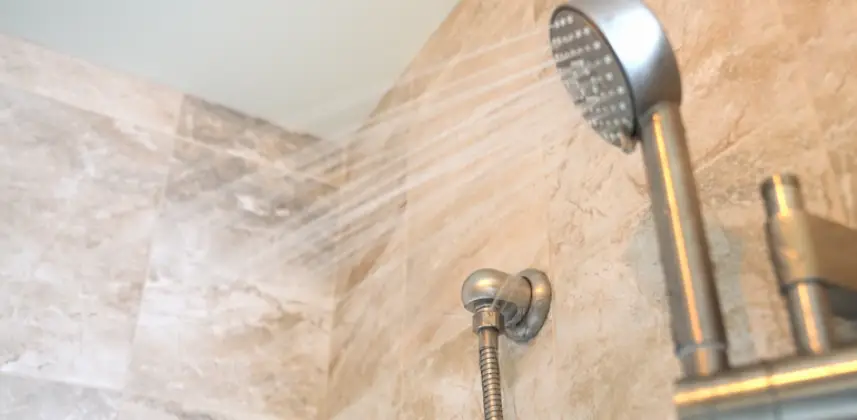
Few things in life are more annoying than the incessant drip, drip, drip of a leaky shower head. For some reason, the human brain cannot tune out the sound—the more you try, the louder it seems to get. And beyond the irritation it causes, a leaky shower can also be expensive over time, especially if the drip is from the hot water valve.
A leaking shower head can often be a harbinger of larger problems. It may indicate an issue with your pipes or your water pressure, and it can even damage your tub shell if left unaddressed for long enough.
If you’re tired of dealing with a leaking showerhead and don’t know how to fix it yourself, there’s no need to worry. Read on to learn more about how to fix this frustrating problem with help from a professional:
- Shower Head Leaking? Think Again
- How to Fix an In-Wall Faucet Valve
Shower Head Leaking? Think Again
While it may seem like your dripping shower head is the root of the problem, it’s often just a symptom. A leaky shower is usually due to an issue with the faucet valve stem and/or valve cartridge. Your shower head is likely fine.
Replacing a faucet valve stem and/or valve cartridge can be difficult. Below we have included step-by-step instructions for attempting the job on your own. If the project seems too difficult, it’s always smart to contact a professional plumber who knows exactly what needs to be done and how to do it correctly.
How to Fix an In-Wall Faucet Valve
Here’s how to fix a dripping shower head by repairing the in-wall faucet valve in 10 steps:
- Turn off the water supply to the tub/shower. There may be a shutoff valve in the bathroom, or you may need to shut off the main water for the whole house. There will likely be some water remaining in the shower lines, so be prepared for a slight downpour when you begin. Also, cover the drain with a towel to protect the surface from damage if you drop a tool, and keep small parts out of the drain.
- If you have a two-valve system, determine which side is causing the shower leak. If the stem is warm and/or the drip is hot, it is likely the hot side.
- Remove the handle or knob. Then remove the faceplates and sleeves that cover the valve and valve body. Set these aside.
- Now that you can see the valve and valve body, unscrew the valve stem and/or cartridge from the valve body with an adjustable wrench. In some cases, you may need to use a cartridge tool specifically designed for your faucet brand.
- Take the valve stem and/or cartridge to a hardware store to purchase the appropriate replacement parts.
- Replace all washers and O-rings, as well as the valve seat. These items are typically included in the purchase of new valve stems or cartridges, but check to be sure.
- Before putting everything back together, use a vinegar-and-water solution (equal parts) and an old toothbrush to remove mineral deposits from the area.
- Install the new valve stem and/or cartridge into the valve body according to manufacturer instructions.
- Re-install the sleeve, baseplate, and handle.
- Turn the water supply back on and run the shower for 30 seconds. Turn off and observe to see if there is still a shower leak. If no drip occurs, apply caulk around the entire baseplate to seal it to the wall.
Still Need Help? Call a Plumber Near You
If you are still having trouble with a leaking shower, or if you don’t feel comfortable handling the job yourself, contact your local Mr. Rooter Plumbing. Our customer service is top-notch, and with our upfront, flat-rate pricing, you know you are getting a great deal! Call us or request an estimate today.

